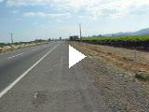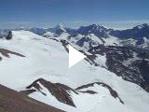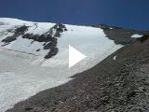I just recently purchased my plane ticket home — I will fly out of Buenos Aires on the 1st of April — and it is a strange feeling to suddenly have a firm ending date to this trip. To make it to Tierra del Fuego and back in that time frame, though, I have to hurry a bit, and I am likely not going to be uploading many photos to the site until I reach the end.
I realize I haven’t written much about my route after Santiago Chile, so I thought I would let you know more or less what I have done since then. I left Chile’s capital a little over a month ago, and followed mostly the main highway south. Having already appeared in the national media and having been featured on a few key Chilean bicycling web sites (here for instance, or here), I had a number of contacts down the road and stayed with many families through southern Chile.
I crossed over to Argentina via a series of boats crossing lakes. Those of you who saw the Motorcycle Diaries, it was the same series of lakes that Che Guevara and Alberto Granado crossed with their motorcycle. From there I spent a day in the tourist capital of Bariloche, and then south to town of El Bolson where I spent a week with a friend of mine who is living in the town.
From El Bolson, I biked straight south, following a paved road through the dry windy steppe of Argentine Patagonia. Not many people live here, and after a few days enjoying the solitude, I suddenly realized I wanted to see both people and vegetation. Following a seldom used dirt road, batteling fierce headwinds, I crossed once more back to Chile, where I am now, and will follow a windy dirt road known as the ‘carretera austral’ through pine forests south. See map – (In Patagonia, the east side of the Andes, in Argentina, is dry, and the west side, In Chile, where you see all the fjords on the map, is a temperate rainforest similar to coastal British Colombia).
There is not much road left, only about twenty some days of pedalling separates me and the end.








